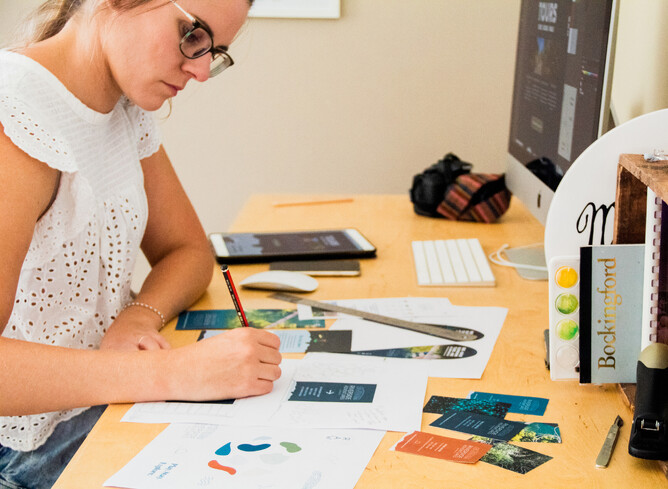In a digital world where great visual content and brands have the ability to influence how people think, graphic designers have the unique opportunity to help make positive change. From social issues to environmental ones, designers can use their skills to have a lasting impact on the people and communities they care about.
You know the saying “If you do what you love, you’ll never work a day in your life,” well that applies here. Many designers within the Creative Launchpad community already live this reality, as they are using their creative minds every day to produce work. However working on client briefs you aren’t super passionate about, or doing repetitive work can get old after a while. That’s where passion projects come in.
Finding purpose can often be aligned with creating meaningful change. If you love your job as a designer but feel that something is missing, then perhaps using your skills for the greater good could provide fulfilment and enhance the individual sense of satisfaction you get from your work.
But before you delve into designing for social change, one must understand the complexity of the issues they hope to make a difference to. Why?
According to Award-winning Graphic Designer Greg Bunbury, in socially oriented work, the process behind the finished design should include three key steps; Empathising with the user, defining their needs and challenging preconceived assumptions to come up with a new vision.
Clear and compelling messaging is critical to design that inspires action and empathising with your audience. Bunbury notes that “so much of this work is about dialogue.” Narratives are key to achieving change, Graphic Designer, Ameer Muavia on Medium recommends using storytelling techniques to portray the essence of the social issue and message you are hoping to convey. If you don’t understand the issue you are hoping to help fix, then you can’t create compelling messaging - it’s as simple as that.
So whether you want to help mobilize people to take climate action or aid political and social movements, knowing what people in these spaces care about is critical. Engagement with stakeholders and community members can help designers understand the importance of issues and why people should care. Seeking community perspectives, and building relationships with organisations is a fantastic idea. Bunbury also notes that you want your values to align with those you are representing, as determining what you stand for as a person is essential to being able to hone your focus on what you want to change.
There are two particular methods of design that particularly suit socially-conscious design; human-centred design and co-design. For those using human-centred design methods, understanding community wants is key. By having a clear comprehension of people’s wants, needs, and behaviours you can seek to change them through your design products and services.
Co-design is attractive as it actively involves stakeholders in your design process. For instance, if you were working with a female-led organisation on a women’s rights campaign, you could consult them during the process to ensure the final product meets their needs. Co-design also empowers those who you are working with.
Socially conscious design continues to push the boundaries of what graphic design can achieve. It really proves that fonts, colours and shapes are more than just captivating images, they can be catalysts for change. Designers can be instrumental in shaping a better world, using their skills to empower those who are marginalised and create better futures for us all.







